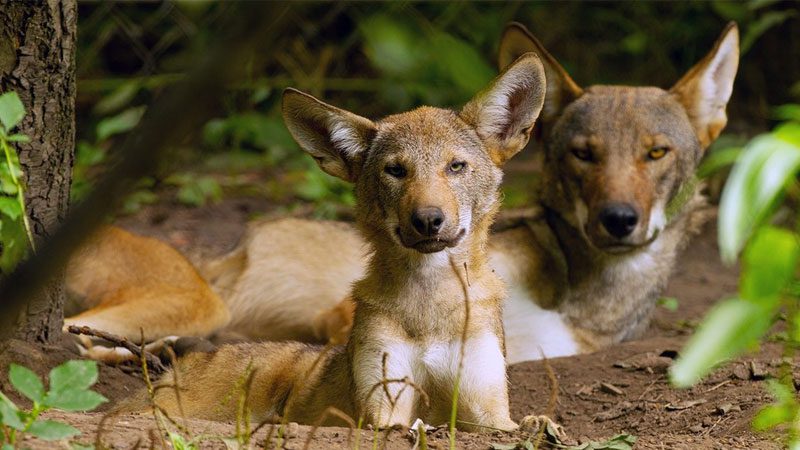Welcome to Lincoln Park Zoo’s new web app! Share your feedback

Red Wolf
Pritzker Family Children’s Zoo
Did You Know?
- Red wolves are the only wolf species native solely to the United States.
- Fourteen red wolves from the 1980s are the founders of all living red wolves today.
- In the 1970s, red wolves were considered extinct in the wild. The last 14 were captured and used to start a breeding program, and by 1985 the population had grown to 65 individuals. Today, there are fewer than 40 wild individuals, but many others remain in human care.
Don’t See the Animals?
Why aren’t animals visible at all times? To promote positive animal welfare, we provide animals with choices. They can choose to spend time in areas that are out of public view.

Take an Animal Home with You
Overview
Scientific Name: Canis rufus
Class: Mammals
Diet: Small mammals (also white-tailed deer and carrion)
Range: North Carolina
Endangered Status: Critically Endangered
More Information
At around 4 feet long and 25 inches tall, red wolves are medium-sized canids that are slightly smaller than their cousins, the better-known gray wolves, and larger than coyotes. They are lean with long legs and short hair. They have a brown- or cinnamon-colored coat, black on their back and tail, and a reddish hue on their head, ears, and legs. They weigh between 45 and 80 pounds, with males being larger than females.
These wolves are most active at dawn and dusk. They live in close-knit family packs and generally mate for life. They are secretive and territorial, with well-hidden dens in hollow trees, stream banks, sand knolls, or downed trees. Breeding takes place between January and March, resulting in a litter of up to nine pups after a 63-day gestation. Less than half of wolf pups born in the wild survive to adulthood as a result of disease, malnutrition, and predation.
